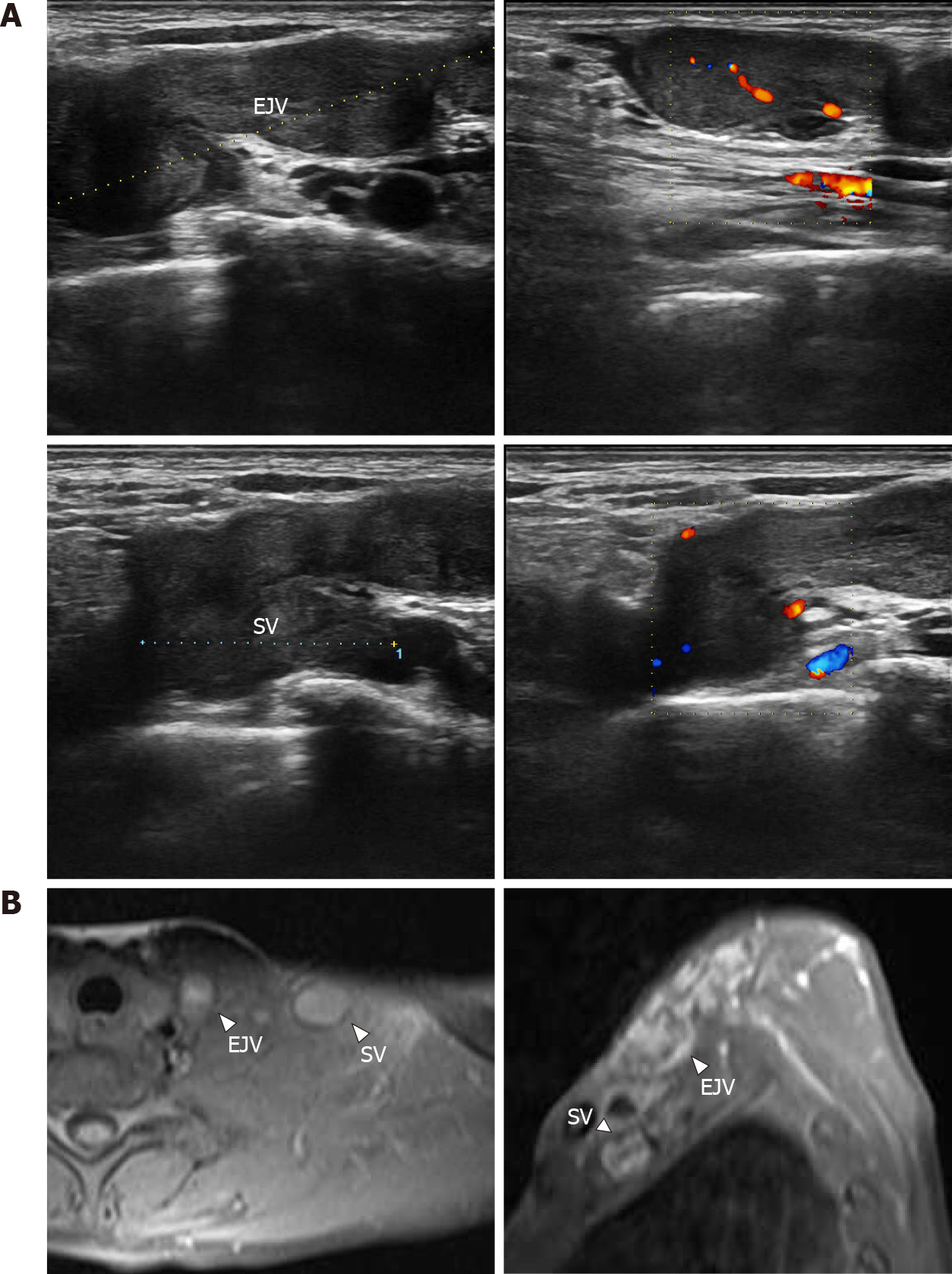Copyright
©The Author(s) 2022.
World J Clin Cases. Jan 21, 2022; 10(3): 985-991
Published online Jan 21, 2022. doi: 10.12998/wjcc.v10.i3.985
Published online Jan 21, 2022. doi: 10.12998/wjcc.v10.i3.985
Figure 1 Imaging examination.
A: Duplex ultrasonography: a circular solid hypoechoic mass could be seen along the external jugular vein, with a general length of approximately 4.2 cm; there was no blood flow signal passing through the lumen, and the mass invaded into the subclavian vein along the external jugular vein. Hypoechoic masses were observed in some areas of the subclavian vein, involving a length of approximately 2.1 cm; B: Magnetic resonance imaging revealed an enhanced longitudinal mass-like lesion in the left supraclavicular fossa. EJV: External jugular vein; SV: Subclavian veins.
Figure 2 Hematoxylin-eosin staining.
A: The mass was composed of spindle cells, which were mainly fibroblasts and myofibroblasts, arranged in irregular bundles. There was a small amount of mucous degeneration and collagen deposition in the stroma with a small amount of inflammatory cell infiltration; B: Fibroblasts and myofibroblasts were oval in shape, with light atypia; a small amount of nuclear division could be seen, and erythrocyte exosmosis was observed in the stroma; C: The nuclei of the spindle cells were uniform with tapered ends and prominent nucleoli.
Figure 3 Immunohistochemistry and USP6 gene rearrangement.
A: The spindle cells were positive for smooth muscle actin; B: The spindle cells were positive for vimentin; C: The spindle cells were positive for caldesmon; D: Ki-67 staining of spindle cells revealed a low proliferative index (5%-10%); E: The spindle cells were negative for CD34; F: The spindle cells were negative for S-100; G: The spindle cells were negative for desmin; H: The spindle cells were negative for c-kit; I: Fluorescence in situ hybridization with a separate probe for USP6 indicated that there might be one yellow or red-green adjacent fusion signal and two red-green separation signals in most cells.
- Citation: Meng XH, Liu YC, Xie LS, Huang CP, Xie XP, Fang X. Intravascular fasciitis involving the external jugular vein and subclavian vein: A case report . World J Clin Cases 2022; 10(3): 985-991
- URL: https://www.wjgnet.com/2307-8960/full/v10/i3/985.htm
- DOI: https://dx.doi.org/10.12998/wjcc.v10.i3.985











